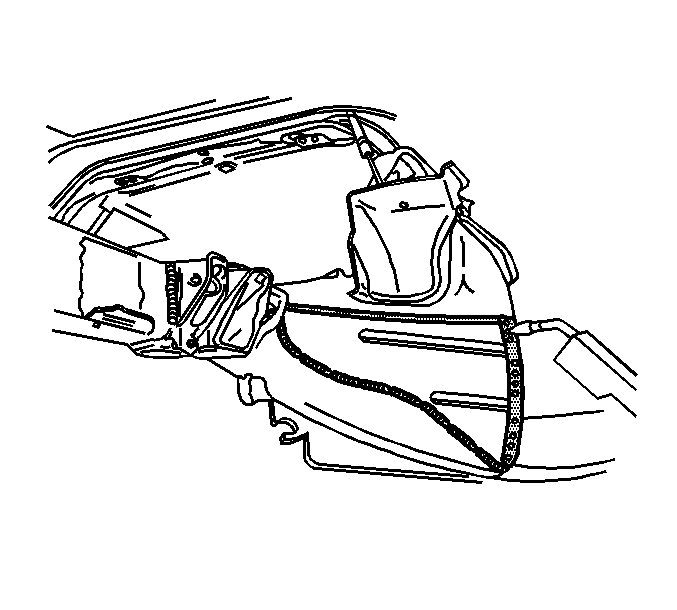For 1990-2009 cars only
Removal Procedure
Caution: Refer to Approved Equipment for Collision Repair Caution in the Preface section.
- Disable the SIR system. Refer to SIR Disabling and Enabling in SIR.
- Disconnect the negative battery cable. Refer to Battery Negative Cable Disconnection and Connection in Engine Electrical.
- Remove all related panels and components.
- Remove the rear impact bar. Refer to Rear Bumper Impact Bar Replacement
- Remove rear compartment panel. Refer to Rear Compartment Panel Replacement .
- Remove the fuel tank from the damaged side of the vehicle. Refer to Fuel Tank Replacement in Engine Controls.
- Note the location and remove the sealers and anti-corrosion materials from the repair area, as necessary. Refer to Anti-Corrosion Treatment and Repair in Paint and Coatings.
- Restore as much of the damage as possible to the factory specifications. Refer to Dimensions - Body , Measurements - Underbody .
- Check the front of dash panel, floor panels, and all other Sheet Molded Compound (SMC) for cracks or areas that may need to be repaired or resealed. Refer to Gouge or Puncture Repair , Rigid Plastic Part Repair Materials in Plastic Panel Information and Repair.
- Remove any welds as necessary and pry up the extension panel to expose the frame rail.
- Apply 25 mm (1 in) tape to the outer lock pillar extension panel.
- Using a die grinder, cut along the edge of the tape line to create a weld flange for installing the new outer lock pillar extension panel.
- Locate and drill out all factory welds. Note the number and location of the welds for installation of the new outer lock pillar lower extension panel.
- Remove the outer lock extension panel.
- Using a die grinder cut through the stitch welds that attach the tunnel brace to the frame rail. Make cuts favoring the frame rail side of the welds.
- Remove the damaged section of the frame rail within the shaded area.
- Determine the sectioning joint location within the recommended area.
- Cut the new frame section from the new frame rail assembly.
- Perform the offset lap-joint sectioning. Refer to Offset Lap Joint Repair .
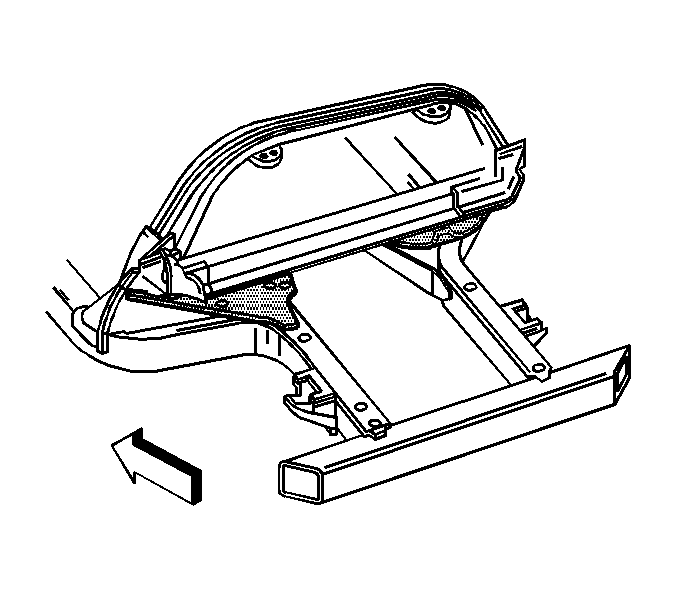
Caution: Refer to Sound Deadener Foam in the Lock Striker Pillars Caution in the Preface section.
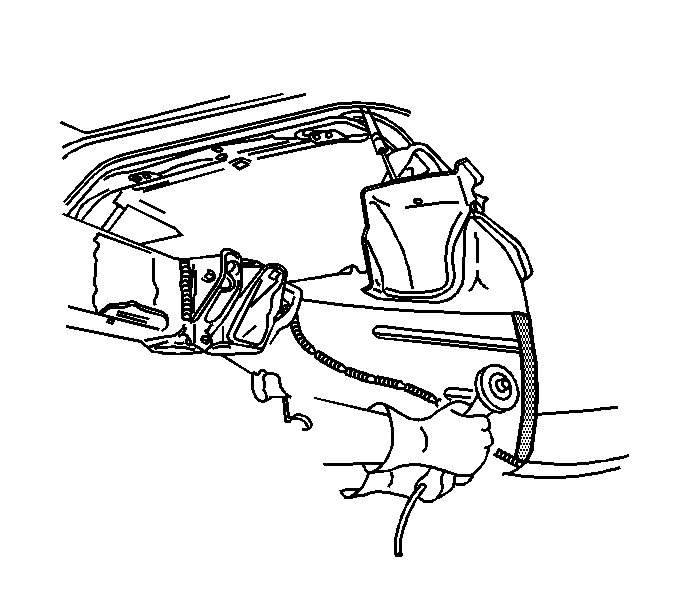
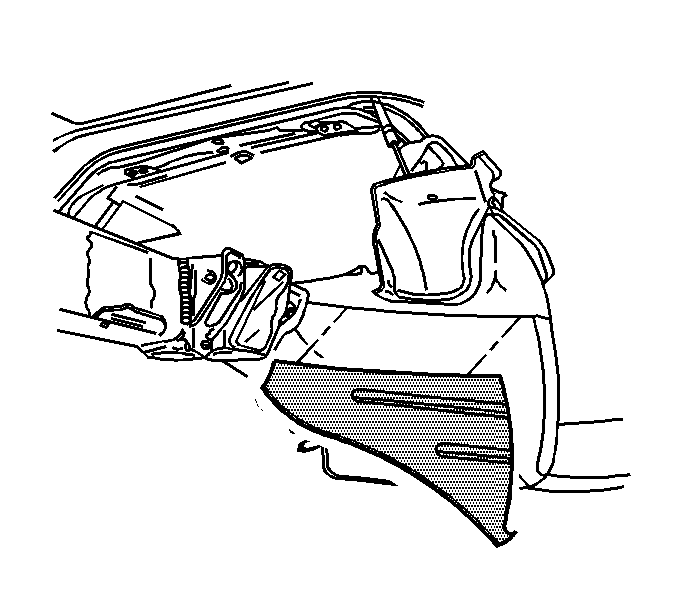

Caution: Refer to Collision Sectioning Caution in the Preface section.

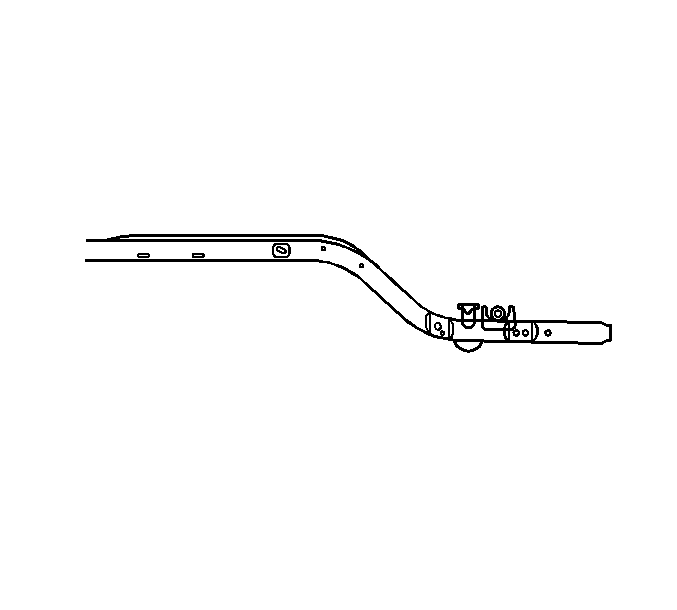
Installation Procedure
- Using a Metal Insert Gas (MIG) welder, stitch weld the tunnel brace to the frame rail duplicating the factory welds.
- Re-position the extension panel.
- Using a MIG welder, weld the extension panel duplicating the factory welds.
- Replace the outer lock pillar extension panel. Trim to fit the outer lock extension panel overlapping the 25 mm (1 in) flange created from the original extension.
- Drill 8 mm (5/16 in) holes in the new outer lock pillar extension for plug welding.
- Using a MIG welder, tack weld the outer lock pillar extension panel in to place.
- Using a MIG welder, plug weld the outer lock pillar extension panel to the flange created form the original extension.
- Using a MIG welder, plug weld the outer lock pillar extension panel to the extension panel.
- Using a MIG welder, stitch weld the outer lock pillar extension to the frame rail duplicating the factory welds.
- Install the rear impact bar. Refer to Rear Bumper Impact Bar Replacement
- Clean and prepare all of the welded surfaces.
- Apply the sealers and anti-corrosion materials to the repair area, as necessary. Refer to Anti-Corrosion Treatment and Repair in Paint and Coating.
- Install rear compartment panel. Refer to Rear Compartment Panel Replacement .
- Paint the repair area. Refer to Basecoat/Clearcoat Paint Systems in Paint and Coating.
- Install the fuel tank. Refer to Fuel Tank Replacement in Engine Controls.
- Install all related panels and components.
- Connect the negative battery cable. Refer to Battery Negative Cable Disconnection and Connection in Engine Electrical.
- Enable the SIR system. Refer to SIR Disabling and Enabling in SIR.
